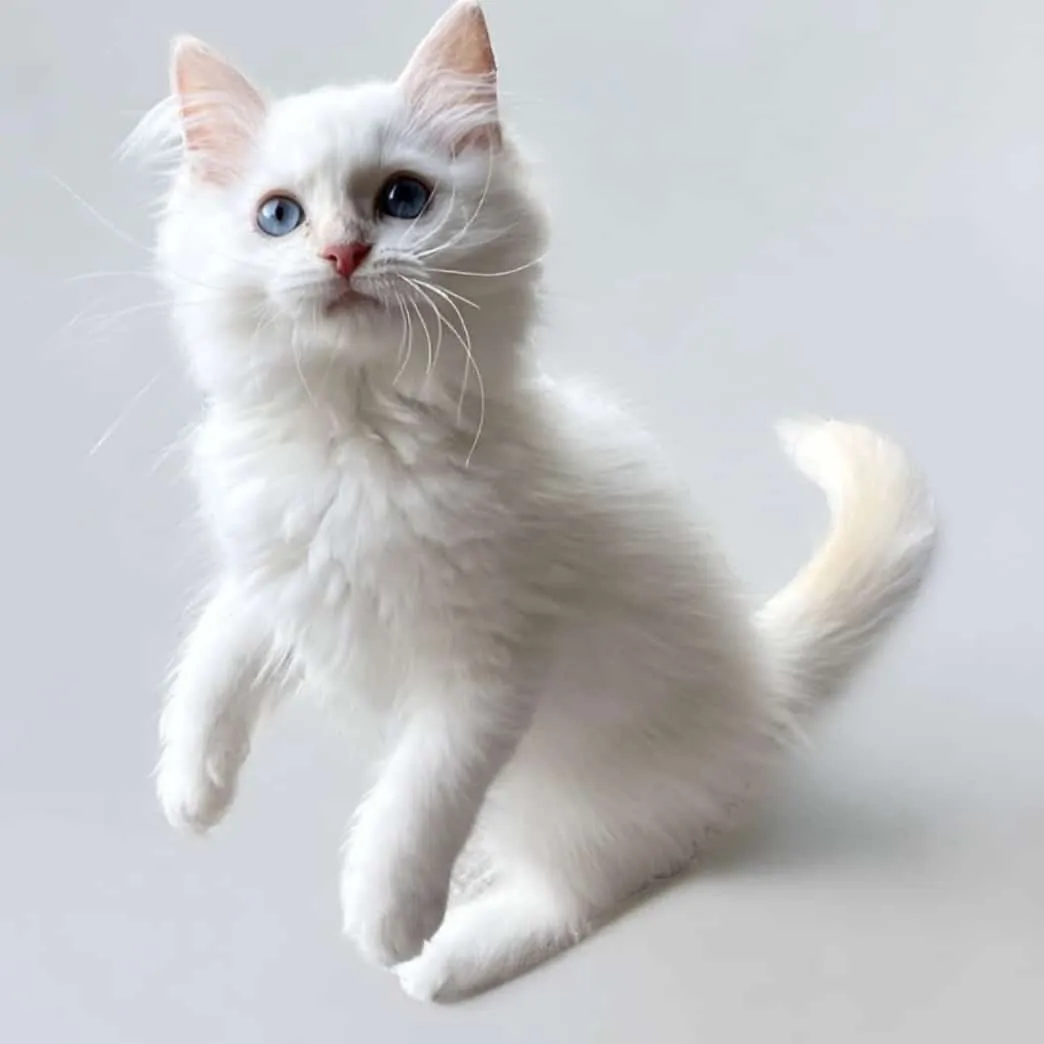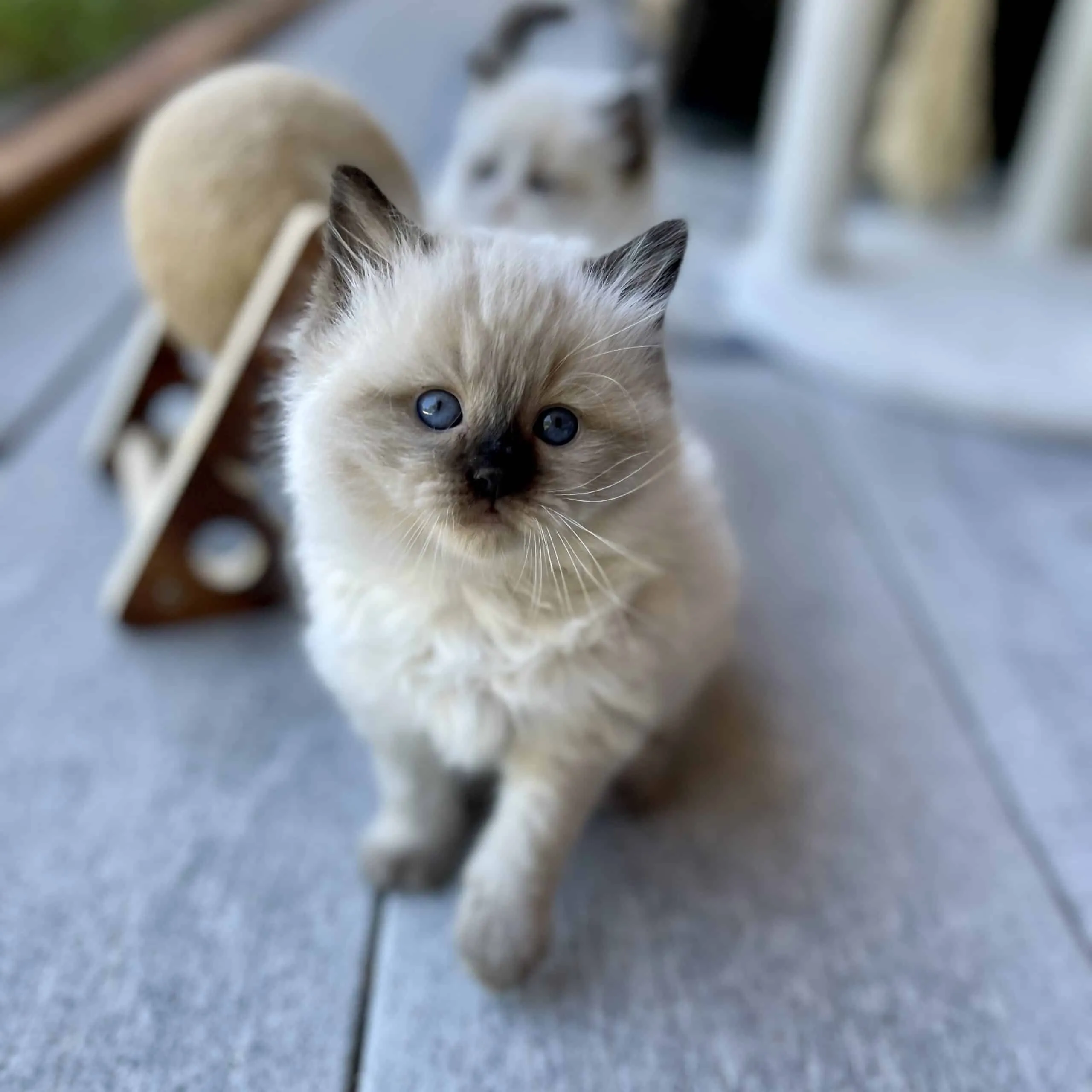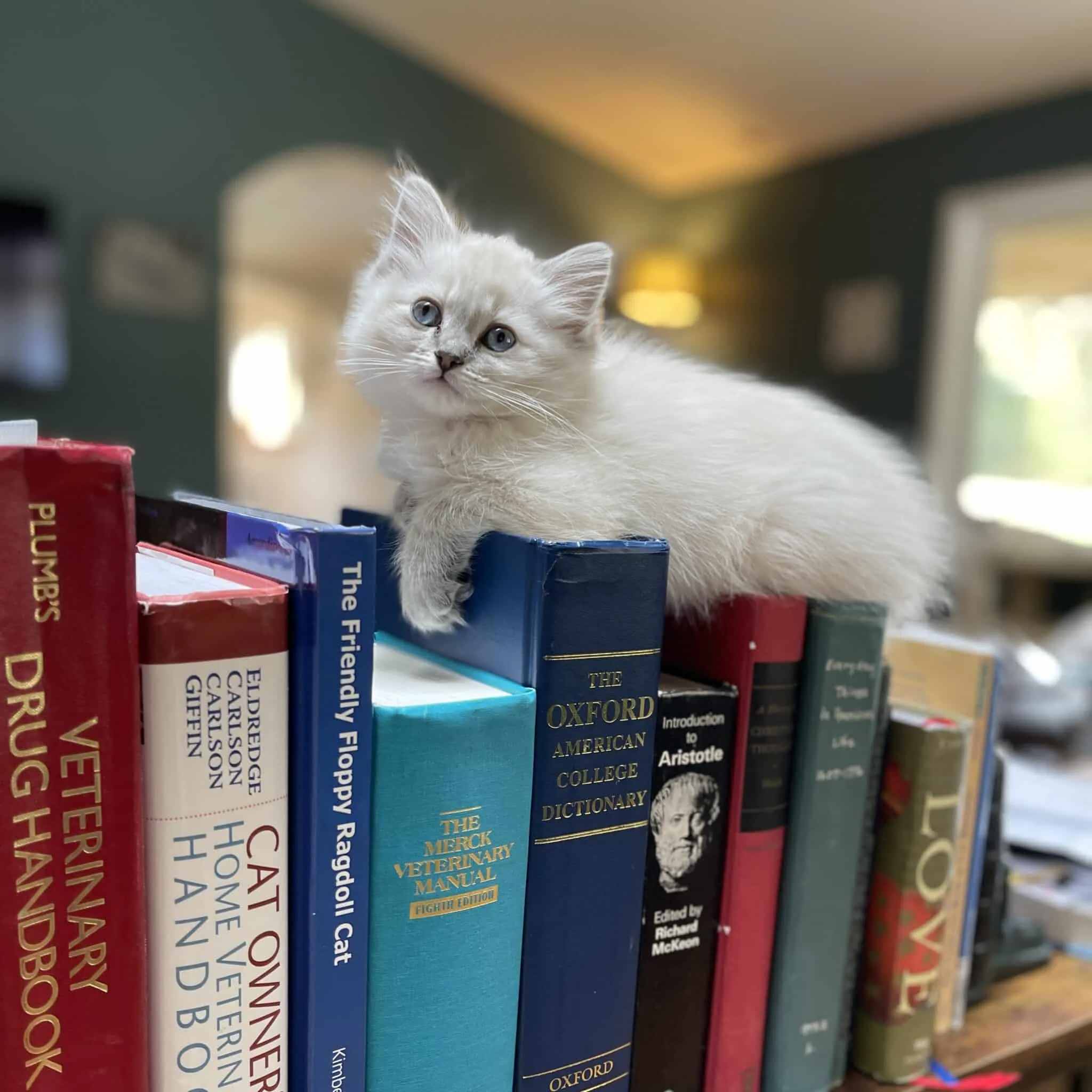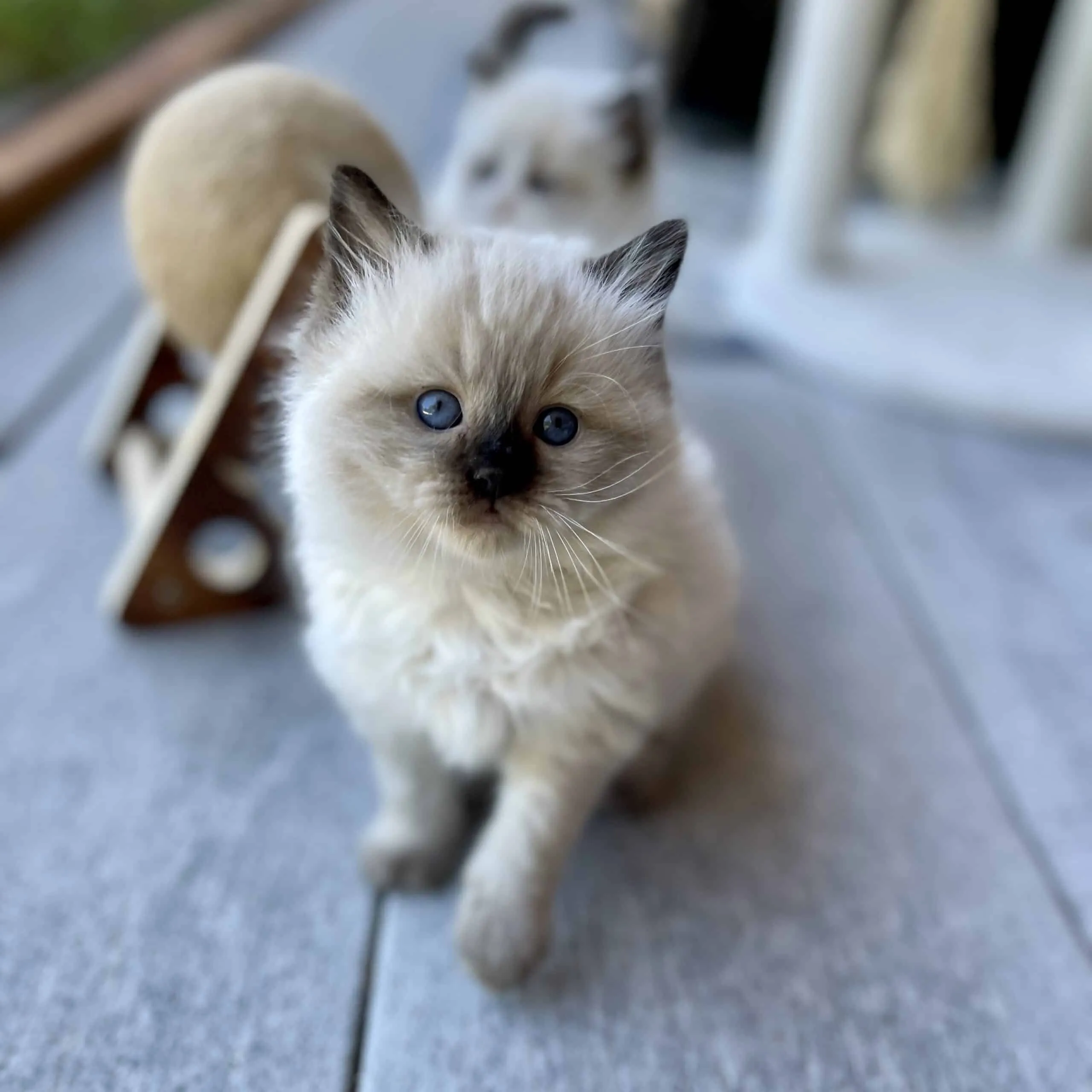The Ragdoll cat is renowned for its striking appearance, but navigating the nuances of its diverse coat colors and patterns can be a delightful challenge, even for seasoned enthusiasts. Among the many beautiful variations, the “Colorpoint Ragdoll” holds a distinct and often misunderstood place. If you’re hoping to adopt a Ragdoll and want to understand the specific terminology, particularly concerning colorpoint genetics, this guide will clarify everything you need to know about this captivating feline. This article aims to decode the complexities of Ragdoll color and pattern classification, focusing on the unique characteristics that define a true colorpoint Ragdoll.
Deciphering Ragdoll Kitten Colors and Patterns
Classifying a Ragdoll cat involves three primary identifiers: its Color, whether it is Pointed or Non-Pointed, and its Pattern. This systematic approach helps distinguish the subtle differences that make each Ragdoll unique. For instance, you might encounter descriptions like “Seal Point Mitted” or “Blue Point Bicolor,” each detailing specific aspects of the cat’s appearance. The key distinction for our primary focus lies in understanding the difference between a “colorpoint” and other “pointed” Ragdolls.
Coat Color
The foundational element in classification is the coat color, which is the official term used by feline experts to assess any cat. Common Ragdoll colors include seal, blue, chocolate, lilac, flame (red), and cream. These base colors form the canvas upon which patterns and point restrictions are expressed.
Eye Color
The term “point” is directly linked to eye color in traditional Ragdolls. A “Pointed” Ragdoll typically possesses stunning blue eyes, a hallmark trait. However, variations exist, such as Mink Ragdolls with aqua eyes and Sepia Ragdolls with green eyes, though these fall under different genetic classifications (Cherubim Ragdolls) and are not considered standard pointed Ragdolls.
Pattern
The pattern describes how the coat color is displayed across the cat’s body. This includes variations like stripes (lynx), white markings (mitted, bicolor), or a masked face. The pattern genetic interplay is what gives Ragdolls their incredible visual diversity.
Color + Pointed/Non-pointed + Pattern: Exploring Seal Point Ragdolls
To illustrate these concepts, let’s examine several examples of Seal Point Ragdolls, where the underlying color is seal, but the patterns vary significantly. Understanding these variations helps highlight what makes a true colorpoint Ragdoll stand out.
 Ragdoll Cat Colors are seal, blue, chocolate, lilac, flam & cream (reds).
Ragdoll Cat Colors are seal, blue, chocolate, lilac, flam & cream (reds).
Seal Point Bicolor
A Seal Point Bicolor Ragdoll, like Mrs. Bennett, showcases the darkest accepted Ragdoll color: seal. She is “pointed” due to carrying the Siamese gene, which is confirmed by DNA tests, and her visible blue eyes. The “bicolor” describes her pattern, a gene that dictates how white fur is displayed, typically with an inverted “V” on the face and white extending up the legs and belly. This striking combination creates a show-stopping appearance.
Seal Point Mitted
Flannery, another Seal Point, exemplifies the “mitted” pattern. These Ragdolls have distinct white feet, resembling mittens, along with a white fluffy belly extending up to their chin. Their ears, tail, and nose are considerably darker than the fur on their main body. Like the bicolor, mitted Ragdolls also carry the Siamese gene and blue eyes. The white gene in mitted cats is less dominant than in bicolors, resulting in white markings primarily on the paws and underside.
Seal Point Lynx Mitted
A Seal Point Lynx Mitted Ragdoll kitten, such as Ponyo, introduces the “lynx” pattern, characterized by tabby stripes that add a unique dimension to the coat. Combined with the white feet, this cat is also “mitted.” Lynx patterns are evident through distinct stripes around the eyes, ears, and often on the head and body. Breeders sometimes omit the word “point” as it is generally assumed that all standard-bred Ragdolls are pointed with blue eyes.
Seal Colorpoint
The Seal Colorpoint Ragdoll is a crucial example for our keyword. This description has fewer words because there is no pattern involving white markings. A Seal Colorpoint is simply “seal + point.” This means the cat displays the seal color with the characteristic point restriction but no white gene whatsoever. It’s often referred to by breeders as just “colorpoint” to denote the absence of any white spotting factor, distinguishing it from mitteds or bicolors.
What is Colorpoint in Ragdolls?
Understanding “colorpoint” is fundamental to appreciating the specific aesthetics of a colorpoint Ragdoll. Colorpoint, also known as “Colorpoint Restriction,” is a fascinating genetic phenomenon driven by an error in the enzyme production of melanin. This mutation primarily involves tyrosinase, an enzyme that is heat-sensitive. It operates effectively only at cooler body temperatures.
Consequently, melanin, responsible for manifesting color, struggles to do its job in warmer areas of the cat’s body. This leads to the distinctive coloration where pigment distribution is limited to the extremities: the tail, ear tips, nose, and feet. These areas naturally have a cooler body temperature, allowing for the development of color. The color gradually lightens and fades as it moves inward towards the warmer trunk of the cat’s body, creating a beautiful gradient effect.
 Seal-Colorpoint-ragdoll kitten colors
Seal-Colorpoint-ragdoll kitten colors
Key characteristics of the colorpoint gene include:
- It is responsible for the gradual contrast in coat color, with darker points.
- It signifies that pigment distribution is limited to the extremities.
- It is the word used to refer to a blue-eyed cat in the context of traditional Ragdolls.
- It is a recessive trait, meaning both parents must carry the gene for it to be inherited.
- This pointed coloration is not exclusive to Ragdolls and is observed in varying degrees across other breeds.
Ragdoll Cats are Pointed by Definition
Historically, all standard-bred Ragdolls are considered “pointed.” There have been discussions over the decades regarding Ragdolls with different color expressions. Beginning in 2025, non-pointed (or Burmese pointed) Ragdolls, which do not possess blue eyes, will be officially classified under a new name: Cherubim. While technically housed under the Ragdoll breed, they will be assessed with different criteria for eye color.
Colorpoint vs. Pointed
It is essential to differentiate between “colorpoint” and “pointed” in Ragdoll terminology. We typically use the term “colorpoint” when specifically discussing a Ragdoll cat that has no white markings on its body. This is the feline fancy’s way of referring to a cat without the white spotting factor. In contrast, we say “pointed” when generally talking about a Ragdoll with blue eyes and the characteristic color contrast between its body and extremities, regardless of whether it has white patterns like mitted or bicolor. Therefore, a colorpoint Ragdoll is a specific type of pointed Ragdoll—one that presents only the point restriction and no white.
Blue Point Ragdoll Cat Color
Beyond seal, another popular hue is the Blue Point Ragdoll. Despite the name, this color is not a vibrant blue but rather a lovely shade of gray. The “blue” is a result of the dilute gene, which reduces the dominant color (in this case, seal or black) to produce a cool, smoky gray.
As with all pointed colors, the darkest version of the blue is most prominent on the ears, tail, and feet, gradually lightening towards the center of the body. A Blue Point Ragdoll will typically have a dark gray nose leather and paw pads to match its points. When prospective owners express a desire for a “grey Ragdoll,” they are almost certainly referring to a Blue Pointed kitten, which can come in all standard patterns. Blue Colorpoints, without any white markings, are less frequently available than their mitted or bicolor counterparts.
 ragdoll cat color blue pointed sits on top of books
ragdoll cat color blue pointed sits on top of books
Chocolate & Lilac Ragdolls
Chocolate is a distinct color in Ragdolls, not merely a variation of seal. It can be a dominant trait or a recessive “carried” gene. The chocolate trait can also be diluted by another gene, leading to the beautiful “lilac” coloration. Chocolate Ragdolls should exhibit a warm, creamy brown hue. Close inspection of their paw pads and nose leather often reveals pink tones, unless the cat is bicolor or mitted, where white on the feet will result in pink toe beans.
Lilac is essentially a diluted form of chocolate, often appearing silver with hints of red. It can be challenging to precisely label lilac, especially if the cat carries other colors like cinnamon or is influenced by white or lynx patterns. Lilac can manifest as silver, bluish, fawn-ish, or even creamy tones, making DNA testing the most reliable method for definitive identification.
Less Common Ragdoll Cat Colors
While seal, blue, chocolate, and lilac are the most widely recognized, Ragdolls also come in several less common, but equally stunning, colors. These unique variations often stem from complex genetic interactions.
Flame (Red) & Cream (Diluted Red)
Flame (or red) and Cream (its diluted counterpart) are captivating colors often seen in tortie females. This coloration is due to the “o” gene, a masking gene that conceals the cat’s true underlying color, which can only be revealed through DNA testing. Red Ragdolls are known for their docile and sweet temperaments, and while not exceedingly common, they are sometimes in high demand among enthusiasts.
Cinnamon & Fawn (Diluted Fawn)
Cinnamon Point Ragdolls are quite rare and frequently found in variant Ragdolls (minks, sepias, or solids, which are non-pointed). The cinnamon gene resides on the same allele as chocolate. If a Ragdoll carries cinnamon, it necessarily carries chocolate as well. Cinnamon, even as a recessive trait, can subtly alter the appearance of chocolate, sometimes leading to confusion between the two colors. Fawn is the diluted version of cinnamon, presenting as a soft, strawberry blonde hue.
Ragdoll Colors Genetics Chart
For those communicating their preferences to a breeder or simply curious about the genetic basis of Ragdoll colors, this chart translates the common names to their genetic labels. Keep in mind that patterns and the white spotting factor will also influence the overall look of the cat, as will bone structure. This helps clarify what defines a colorpoint Ragdoll at a genetic level versus other pointed variations.
| What the cat fanciers call the Ragdoll cat | What others call it hypothetically | What the Geneticists labels it |
|---|---|---|
| Seal Point | Almost Black, Dark Brown | BB DDBb DdBb1 Dd |
| Blue Point | Gray | BB ddBb ddBb1 dd |
| Chocolate Point | Brown | bb DDbb Ddbb1 DDbb1 Dd |
| Lilac Point | Silver, Reddish Silver | bb ddbb1 dd |
| Flame Point | Orange or Red | o |
| Cream Point | Cream or Peach | oo, dd |
| Cinnamon Point | Reddish Brown | b^1 b^1 DDb^1 b^1 Dd |
| Fawn Point | Strawberry Blonde | b^1 b^1 dd |
Ragdoll Cat Patterning
Beyond color, patterns dictate how the color is displayed. Most prospective adopters intuitively know if they prefer a dark nose or a distinct mask. The white spotting factor plays a significant role in creating these varied patterns.
There is a distinction in the breeding world between “True Bicolor” Ragdolls and those that appear bicolor but are genetically variations of the mitted pattern. While visually similar, True Bicolors possess a unique white gene (“S”) causing their specific patterning, whereas many modern bicolors are the result of breeding two mitted cats, increasing the white spotting genes to mimic the bicolor appearance. The key takeaway is that a colorpoint Ragdoll inherently lacks any of these white-spotting patterns.
 Seal-Colorpoint-ragdoll-colors-explained
Seal-Colorpoint-ragdoll-colors-explained
Colorpoint
- Genotype: ss
- Due to the cscs allele, similar to a Siamese cat.
- No white present anywhere on the body.
- No white spotting factor (WSF).
- This is the least commonly found Ragdoll pattern, as it lacks any white markings.
True Bicolor
- Genotype: Ss
- White extends from the feet into the legs, covering the lower half of the body.
- Visually, it can be indistinguishable from high mitted or mid bicolor patterns.
- Results from a unique white gene (S), meaning the cat carries one colorpoint gene and one bicolor gene.
Mitted
- Genotype: sms
- Due to the White Spotting Factor (WSF).
- White is present on the feet (mittens), underbelly, and chin.
- The majority of the body remains non-white.
High White (Van)
- Genotype: SS
- Represents the highest level of visible white patterning.
- Typically results from breeding two heterozygous true Bicolor Ragdolls.
- Relatively uncommon.
Steps to Classifying a Ragdoll’s Cat Color & Pattern
When attempting to classify a Ragdoll, a systematic approach helps distinguish its unique traits. This process will also clearly highlight when you are observing a true colorpoint Ragdoll.
- Look for White Patterning First: Observe if the cat has white feet, a white chin, and a white belly. If so, it’s a mitted. If it has an inverted white V on its face, long white “gloves” on its feet, and a white belly and chin, it’s a bicolor. If there is no white at all, it’s a colorpoint Ragdoll.
- Look for Stripes: Check for stripes around the eyes, ears, head, and body. If stripes are visible in all three areas, the cat has a lynx pattern.
- Look for Splotches or Mixed Colors: Search for splotches, a split-face color, or any red or cream mixed into the coat. If you see red of any kind with either patches or a split pattern, it’s a tortie. Tortie cats are almost exclusively female.
By following these steps, you can accurately identify the stunning variety of Ragdolls, confidently distinguishing a rare colorpoint Ragdoll from its patterned counterparts.
Conclusion
Understanding the intricate world of Ragdoll cat colors and patterns, especially the distinction of the colorpoint Ragdoll, empowers prospective owners and enthusiasts alike. From the heat-sensitive tyrosinase enzyme that creates the gradual color restriction to the absence of any white spotting factor, a colorpoint Ragdoll is a pure expression of its base color without additional patterns. While all traditional Ragdolls are “pointed” with captivating blue eyes, the “colorpoint” designation specifically refers to those magnificent felines that showcase their rich, dark extremities fading into a lighter body, entirely devoid of white markings. This knowledge not only deepens appreciation for the breed but also helps in making informed choices when seeking a new feline companion. We encourage you to continue exploring the fascinating genetics of these wonderful cats and perhaps even test your knowledge with a Ragdoll color and pattern quiz!
